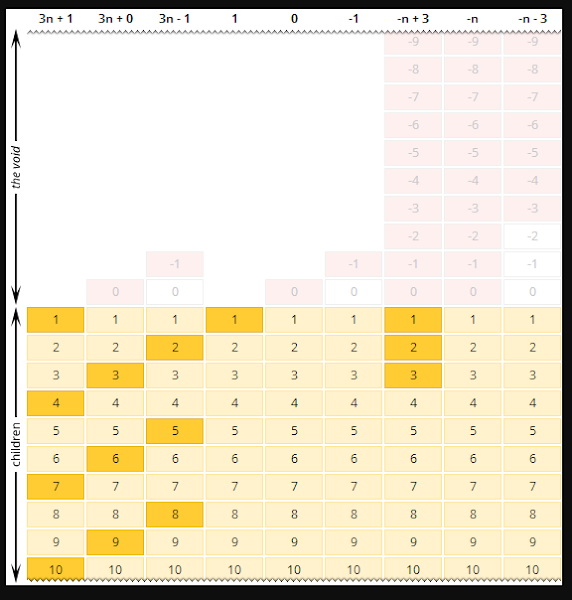CSS nth-child Selector Pwned
The CSS3 :nth-child() selector pseudo-class allows you to select elements based on their position in the set of children of their parent. It accepts an argument in the form of an + b. How exactly does it work? Let me explain.
In very simple words, the expression an + b matches every ath element in the set starting from the bth element keeping in mind that (i) the index numbering starts at 1 (ii) zero and negative values do not represent any element (iii) text and non-element nodes are not counted. The following corollaries exist:
acan be zero orancan be omitted – in which case there is no "every ath element in the set" clause and only the bth element is matched.acan be negative – in which case every ath element is matched going backwards, towards non-existing elements.bcan be zero or negative – in which case the matching starts from a non-existing element.- The argument can be
oddoreven– which represent the expressions2n + 1and2nrespectively.
The following chart shows how the expressions match elements:

These rules apply to the following CSS3 pseudo-classes:
:nth-child()– matches elements that are nth child of their parent.:nth-last-child()– matches elements that are nth child of their parent counting backwards, i.e. 1 represents the last element, 2 represents second last, and so on.:nth-of-type()– matches elements that are nth element of their type among the children of their parent.:nth-last-of-type()– matches elements that are nth element of their type among the children of their parent counting backwards.
Combined Example
Consider the following HTML markup:
<dl>
<dt>Term 1</dt>
<dd>Description 1</dd>
<dt>Term 2</dt>
<dd>Description 2</dd>
<dt>Term 3</dt>
<dd>Description 3</dd>
<dt>Term 4</dt>
<dd>Description 4</dd>
</dl>
The aforementioned CSS pseudo classes match as follows:
dl > :nth-child(2n + 1) /* match elements that are odd children (all dt elements) */ dl > dd:nth-child(2n) /* match dd elements that are even children (all dd elements) */ dl > dt:nth-child(2n) /* match dt elements that are even children (no match) */ dl > :nth-last-child(1) /* match elements that are first child counting from end (last element) */ dl > dt:nth-last-child(1) /* match dt elements that are first child counting from end (no match) */ dl > dd:nth-last-child(1) /* match dd elements that are first child counting from end (last dd element) */ dl > :nth-of-type(2n + 1) /* match elements that are odd elements of their type (first and third dt and dd elements) */ dl > dt:nth-of-type(2n + 1) /* match dt elements that are odd elements of their type (first and third dt elements) */ dl > dd:nth-of-type(2n + 1) /* match dd elements that are odd elements of their type (first and third dd elements) */ dl > :nth-last-of-type(1) /* match elements that are first elements of their type counting from end (last dt and dd element) */ dl > dt:nth-last-of-type(1) /* match dt elements that are first elements of their type counting from end (last dt element) */ dl > dd:nth-last-of-type(1) /* match dd elements that are first elements of their type counting from end (last dd element) */
Use the following demo to test the arguments.


Komentar
Posting Komentar